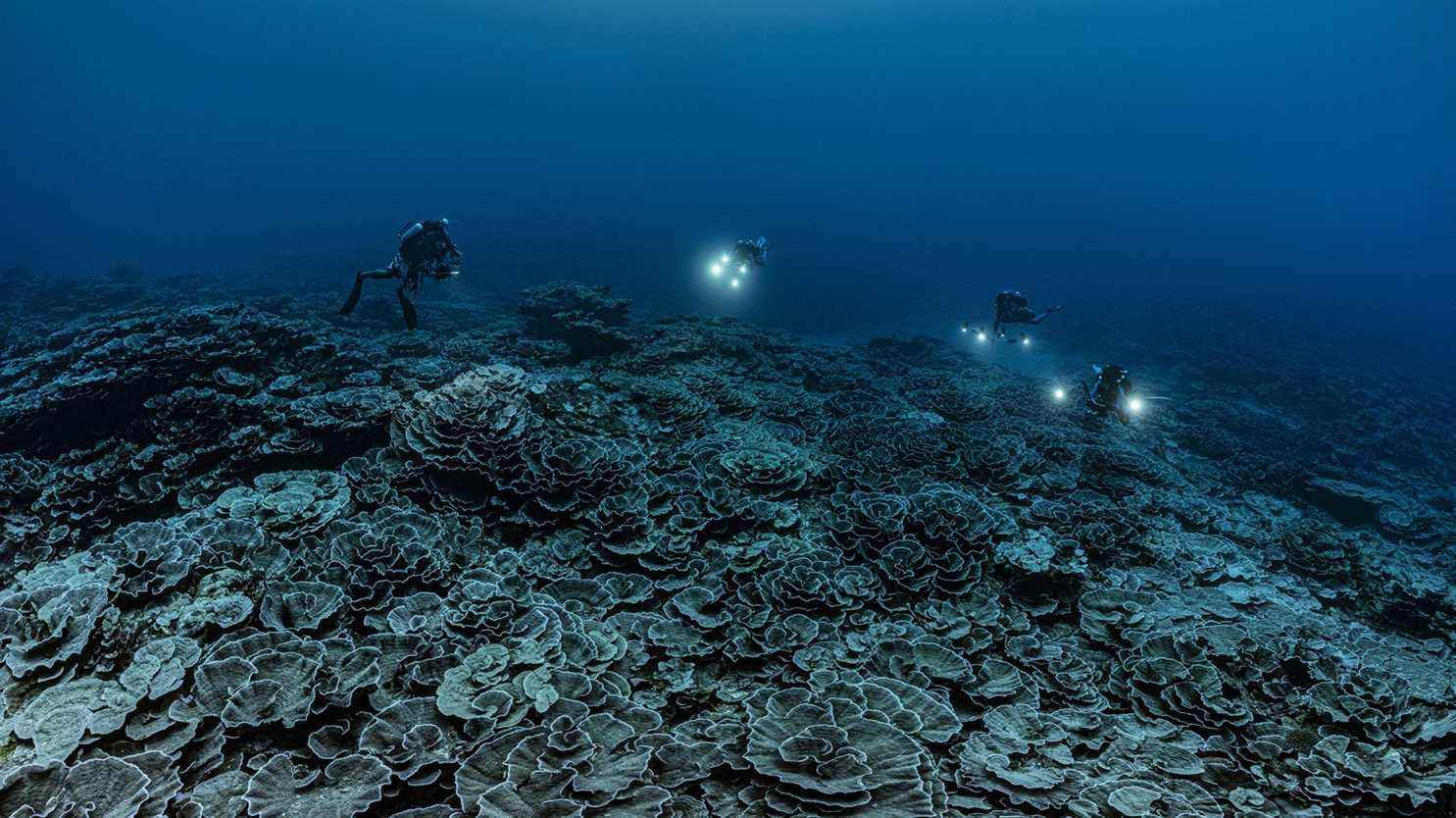“It’s incredibly tender!” : photographer, diver and explorer, Alexis Rosenfeld still feels this emotion in front of the “valley of a thousand roses”, these giant corals bringing hope recently discovered, more than 30 meters deep, off Tahiti.
“This type of coral, in this place, was probably known for generations by some Polynesians”, he told AFP. But his team, like the scientists from CRIOBE, a French laboratory for the study of coral ecosystems, did not imagine such immensity when they came across this treasure in November.
Equipped with rebreathers, these “small factories” which allow divers to stay underwater for up to five hours, Alexis Rosenfeld and his partners had just started a “delicate descent into the blue”.
“Around 20 meters, we begin to perceive a detail, the bottom which takes shape, the field of ‘roses’ which chisels gently, a fine lace appears and lines the bottom of the sea, as far as the eye can see. The valley of a thousand roses. It’s incredibly tender.”, he saw again, two months later, with AFP, from his office, in the Calanques high school in Marseille.
In the image, the roses come out blue, because “red is absorbed by the layer of water”. Since its publication on January 20, his photo of this coral field has been around the world, to the front page of washington post.
Explorers discover “unrivaled” reef of rose-shaped corals that could hold lessons for warming oceans https://t.co/a4dI9qowZO
— The Washington Post (@washingtonpost) January 20, 2022
This reef, three kilometers long and 30 to 65 meters wide, is between 30 and 65 meters deep. And it shows no signs of stress or disease, when corals closer to the surface in French Polynesia are suffering from global warming and experienced a bleaching episode in 2019. “An extraordinary discovery”, said UNESCO.
For Laëtitia Hedouin, marine biologist at CNRS and CRIOBE, this discovery is “good news”, which suggests that “deeper reefs may be better protected from global warming”.
Because the preservation of corals is a key issue: ecological niches, they shelter at least a quarter of marine biodiversity. Reefs are also powerful tools in the fight against coastal erosion.
After twenty days of diving on this site, in November, Alexis Rosenfeld and his team will continue the exploration deeper, where they have already seen fields of gorgonians, also called “bark corals”.
“The seabed is the most unexplored part of our planet: we have mapped 20% of it, we know very few species, there is everything to do”
Alexis Rosenfeldat AFP
This is also the whole meaning of the United Nations decade (2021-2030) of ocean science for sustainable development, which aims to “invest massively in oceanography”. In this device, Alexis Rosenfeld plays the role of “witness” via its 1 Ocean campaign.
By 2030, it will notably have to produce 1,000 photographs of the depths and distribute them to the general public, for example via monumental exhibitions in stations in France.
Equipped with his Unesco-branded suit, he is already thinking of the images he will be able to capture on the Aldabra atoll in the Seychelles, the largest refuge for giant land tortoises, preserved from human influence and listed as a UNESCO World Heritage Site. Unesco. Or on the reefs of Entrecasteaux, in New Caledonia, “probably one of the most pristine regions in the world”. With one goal: “Building Consciousness” for the protection of the oceans.
“It goes through the beautiful, but I think the alerts of (the environmental activist) Camille Etienne, the actions of Hugo Clément (Editor’s note: journalist and environmental activist) , the messages of the WWF or the actions of Greenpeace are also essential, it is a real ecosystem that is on the move for the planet of tomorrow”, he wants to believe.
But he also sees the less beautiful: “Not so long ago we were in Marseille, in the creeks, to show the absolutely disgusting aspect” garbage.
